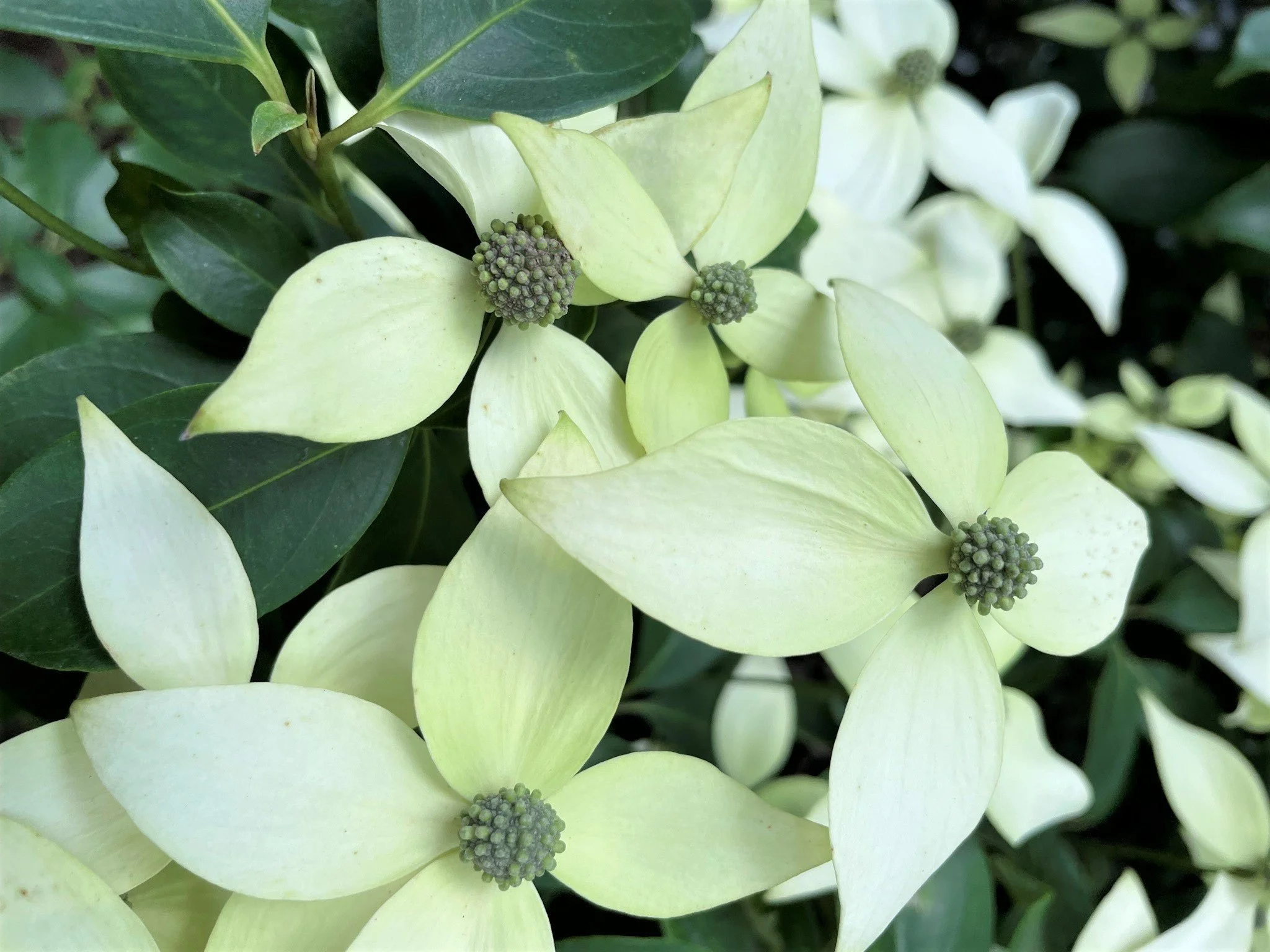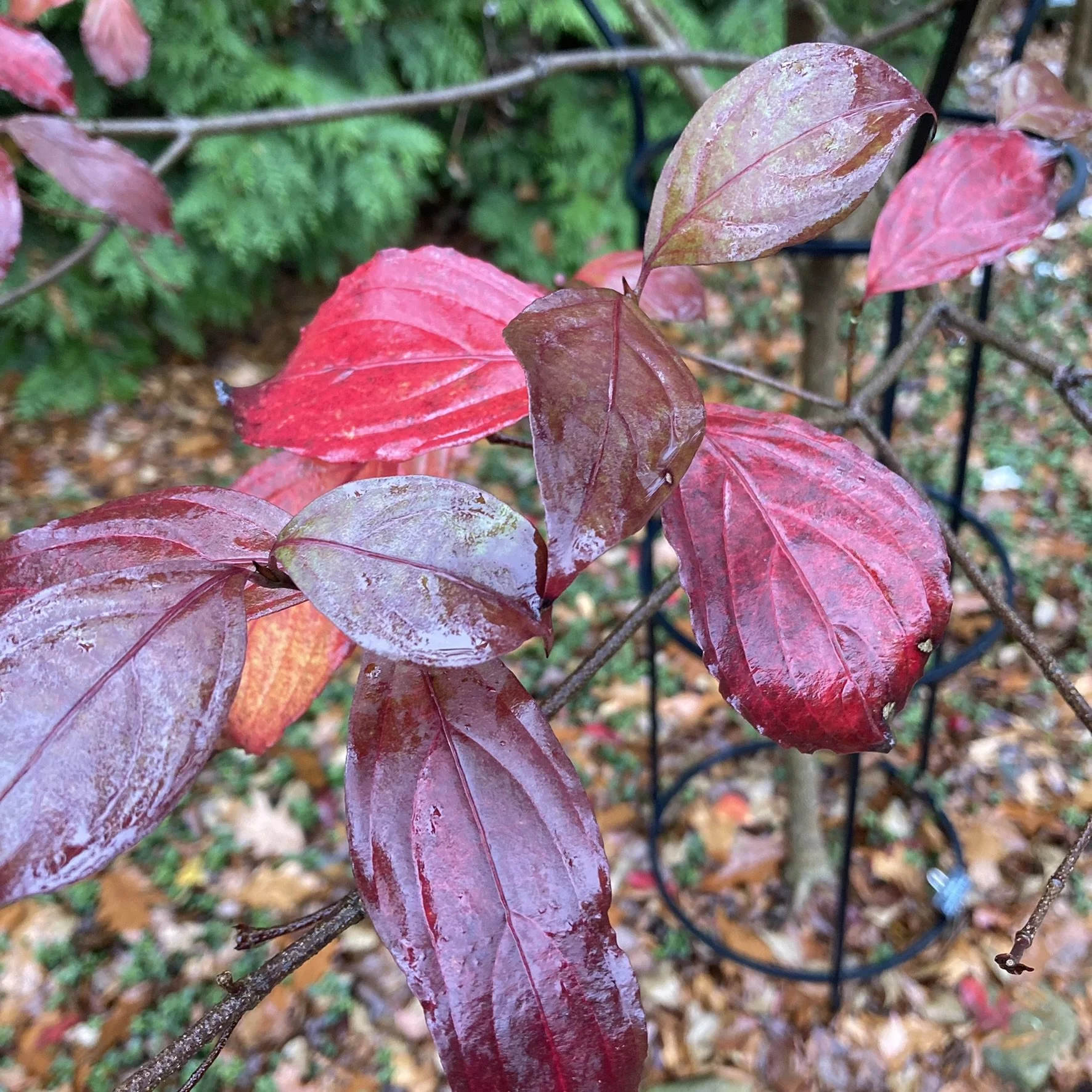Dogwood selections
-
Cornus kousa x hongkongensis ‘Little Ruby’
Dr. Tom Ranney at the NC Arboretum was instrumental in the development of this wonderful tree. In our garden it is almost evergreen in that it holds on to most of its leaves after they have turned burgundy in the fall. This nice winter interest is followed by beautiful pink bracts in the spring.
-

Cornus florida var. Pringleii (syn. urbiniana) Mexican Dogwood
The first time I saw this rare tree was in the nursery at the UNC Charlotte Botanical Garden. Needless to say, I was blown away and had to have one. Dr. Larry Mellichamp kindly gave me a small tree that he had propagated from the one in the nursery. I later found another at Camellia Forest Nursery outside Chapel Hill.
-

Cornus kousa ‘Rutpink’ (commonly known as ‘Scarlet Fire’)
I bought this tree after seeing it online (not necessarily something I would recommend). However, this time I was not disappointed. With dark pink bracts, this is one of the most floriferous of the kousas. While many gardeners have been frustrated with their kousas not blooming the first few years, this plant is likely to bloom at a very young age.
-

Cornus mas 'Cornelian Cherry'
This is one of Lib’s favorite late winter bloomers. Blooms look nothing like our native dogwood; they are yellow and held close to the branches. Their appearance is not too dissimilar to the witch hazel.
-

Cornus angustata 'Empress of China'
It’s the last dogwood to bloom in your garden, but the profuse buds do not disappoint as they will be in flower the entire month of June. This is an evergreen dogwood in our Zone 8a garden.

